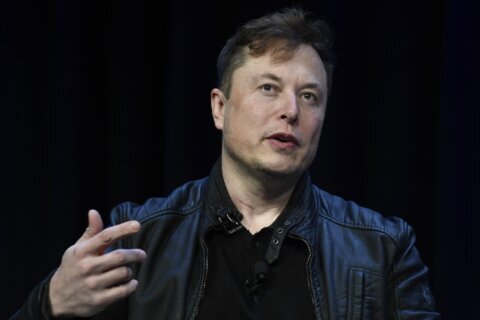
WASHINGTON (AP) — A price gauge closely tracked by the Federal Reserve cooled slightly last month, a sign that inflation may be easing after running high in the first three months of this year.
Friday’s report from the Commerce Department showed that an index that excludes volatile food and energy costs rose 0.2% from March to April, down from 0.3% in the previous month. It was the mildest such increase so far this year.
Measured from 12 months earlier, such so-called “core” prices climbed 2.8% in April, the same as in March. Overall inflation increased 0.3% from March to April, the same as in the previous month, and 2.7% from a year earlier, also unchanged from March’s figure.
The latest figures could provide some tentative reassurance for Fed officials, who aggressively raised interest rates to fight inflation, that price pressures are easing. Chair Jerome Powell has said he expects inflation, after picking up in the first three months of 2024, to resume cooling in the coming months. Powell has cautioned, though, that the central bank needs “greater confidence” that inflation is sustainably slowing before it would consider cutting rates.
“April is a first step in the right direction, but much work remains,” said Stephen Stanley, chief U.S. economist at Santander, an investment bank.
The Fed tends to favor the inflation gauge that the government issued Friday — the personal consumption expenditures price index — over the better-known consumer price index. The PCE index tries to account for changes in how people shop when inflation jumps. It can capture, for example, when consumers switch from pricier national brands to cheaper store brands.
Inflation fell sharply in the second half of last year before sticking well above the Fed’s 2% target in the first few months of 2024. With polls showing that costlier rents, groceries and gasoline are angering voters as the presidential campaign intensifies, Donald Trump and his Republican allies have sought to heap the blame on President Joe Biden.
Friday’s report also showed that income growth slowed and spending cooled sharply in April, a trend that could help moderate economic growth and inflation in the coming months and potentially please the Fed.
Adjusted for inflation, after-tax incomes fell 0.1% in April, the second such drop this year. Consumer spending also declined 0.1% when adjusted for inflation, a sign that economic growth may remain modest in the current April-June quarter. The Fed will likely see such data as evidence that the economy is cooling in a way that could restrain inflation later this year.
Many Americans, particularly lower-income workers, have been pulling back on spending as they struggle to keep up with rising expenses, leading some businesses to rein in prices. In recent weeks, chains including McDonald’s, Target and Walmart have announced price reductions or temporary discount deals.
Grocery prices eased last month, according to Friday’s report, though they’re still up significantly from before the pandemic. The prices of long-lasting goods also dropped, led by less expensive new and used cars, furniture and appliances. The cost of used cars has declined nearly 5% over the past year.
Gas prices, though, jumped 2.7%, just from March to April. Likewise, the costs of many services rose faster than the Fed would like. Restaurant meals, for example, increased 0.3% from March to April and are up 4% from a year earlier. Entertainment prices, including for movies and concerts, jumped 7.4% from 12 months earlier.
In the past couple of weeks, a stream of remarks by Fed officials have underscored their intention to keep borrowing costs high as long as needed to fully defeat inflation. As recently as March, the Fed’s policymakers had collectively forecast three rate cuts this year, starting as early as June. Yet Wall Street traders now expect just one rate cut this year, in November.
One influential Fed official, John Williams, president of the Federal Reserve Bank of New York, said Thursday that he expects inflation to start cooling again in the second half of the year. Until it does, though, Powell has made clear that the central bank is prepared to keep its key rate pegged at 5.3%, its highest level in 23 years.
But Williams expects inflation, according to the Fed’s measure, to cool only slightly by year’s end, to a 2.5% annual pace. He doesn’t foresee it dropping to the Fed’s 2% target until next year.
The central bank raised its benchmark rate from near zero to its current peak in 15 months, the fastest such increase in four decades, to try to conquer inflation. The result has been significantly higher rates for mortgages, auto loans and other forms of consumer and business borrowing.
In Europe, inflation rose unexpectedly in May to a yearly rate of 2.6% from 2.4%, according to official figures released Friday, in a sign that rising prices haven’t yet been fully tamed in the 20 countries that use the euro. Still, the European Central Bank is likely to proceed with an interest rate cut at its meeting next week.
Copyright © 2024 The Associated Press. All rights reserved. This material may not be published, broadcast, written or redistributed.







